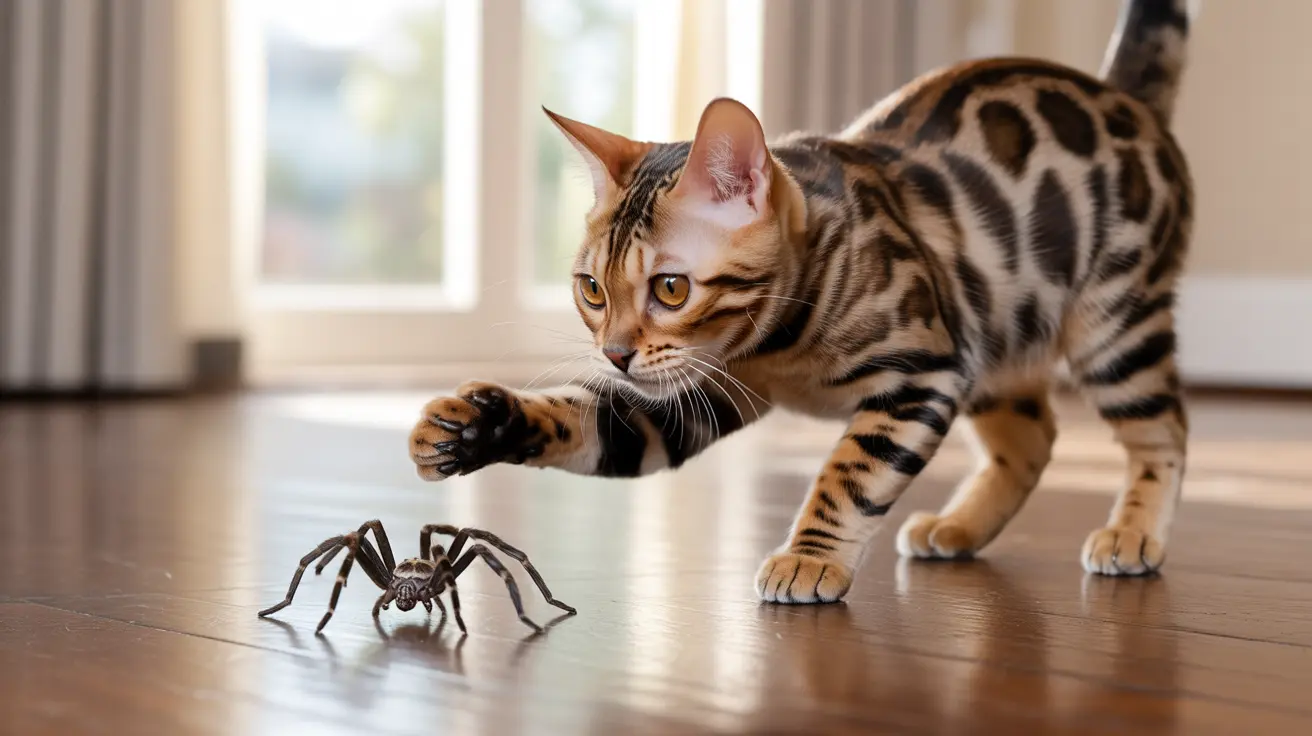If you've ever watched your cat stalk and pounce on an eight-legged intruder, you might wonder: can cats eat spiders safely? While most household spiders pose minimal risk to our feline friends, there are important considerations every pet owner should understand about this common behavior.
In this comprehensive guide, we'll explore the safety implications, potential risks, and what you need to know when your cat decides to make a snack out of an arachnid.
Understanding Why Cats Hunt Spiders
Cats are natural-born hunters, and their attraction to spiders stems from deep-rooted predatory instincts. The quick, erratic movements of spiders trigger your cat's hunting response, making them irresistible targets for play and pursuit. This behavior is particularly common in indoor cats who may have limited outlets for their hunting drives.
Safety of Spider Consumption for Cats
The good news is that most common household spiders are generally safe if consumed by cats. Your cat's digestive system is well-equipped to handle occasional spider snacking, with stomach acid that can effectively neutralize most spider venom.
However, this doesn't mean all spider encounters are risk-free. The primary concern isn't usually the eating of spiders but rather the potential for bites during the hunting process.
Potential Risks and Dangers
Venomous Spider Species
While most household spiders are harmless, certain species can pose serious risks to cats:
- Black Widow spiders
- Brown Recluse spiders
- False Widow spiders
- Woodlouse spiders
Warning Signs to Watch For
If your cat has encountered a potentially dangerous spider, watch for these symptoms:
- Swelling around the face or bite area
- Vomiting or diarrhea
- Lethargy or weakness
- Difficulty breathing
- Changes in behavior or appetite
Prevention and Safe Management
To minimize risks associated with spider encounters:
- Regularly inspect your home for dangerous spider species
- Use pet-safe pest control methods
- Provide alternative forms of enrichment for your cat
- Keep your home clean and free of spider-attracting clutter
- Consider using natural spider deterrents in your home
When to Seek Veterinary Care
While most spider encounters end harmlessly, immediate veterinary attention is necessary if you observe:
- Severe swelling or inflammation
- Respiratory distress
- Prolonged vomiting or diarrhea
- Unusual lethargy or collapse
- Signs of pain or distress
Frequently Asked Questions
Is it safe for my cat to eat spiders found inside the home?
Most household spiders are safe if eaten by cats. However, it's best to discourage this behavior as some species can be dangerous, and hunting spiders poses a small risk of venomous bites.
What symptoms should I watch for if my cat is bitten by a venomous spider?
Watch for swelling, difficulty breathing, vomiting, lethargy, and changes in behavior. If you notice any of these symptoms, especially after a known spider encounter, seek immediate veterinary care.
Which types of spiders are most dangerous for cats to encounter or eat?
Black Widow and Brown Recluse spiders pose the greatest risk to cats in North America. These species can cause serious illness through their bites, though actual encounters are relatively rare.
Why do cats like to hunt and eat spiders even though they don't need them nutritionally?
Cats hunt spiders due to their natural predatory instincts. The movement of spiders triggers their hunting response, making them irresistible targets for play and pursuit, regardless of nutritional value.
What should I do if my cat shows signs of illness after eating a spider?
Monitor your cat closely for 24-48 hours. If symptoms persist or worsen, or if you suspect interaction with a venomous spider, contact your veterinarian immediately. Keep your cat comfortable and maintain access to fresh water.
While cats eating spiders is generally safe, being informed about the potential risks and knowing when to seek help ensures your pet's safety. Remember, providing alternative forms of enrichment can help satisfy your cat's natural hunting instincts in a safer way.






